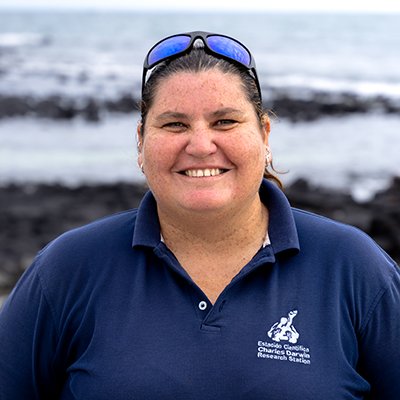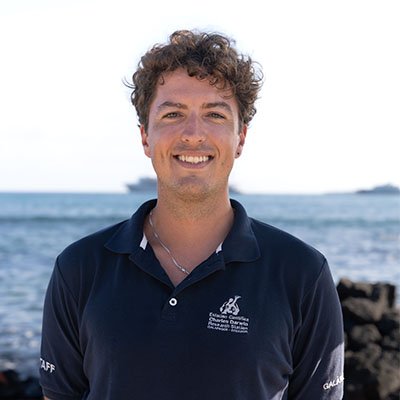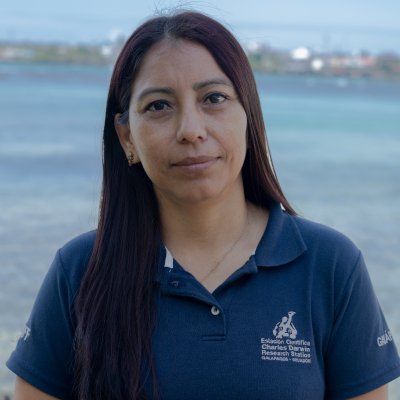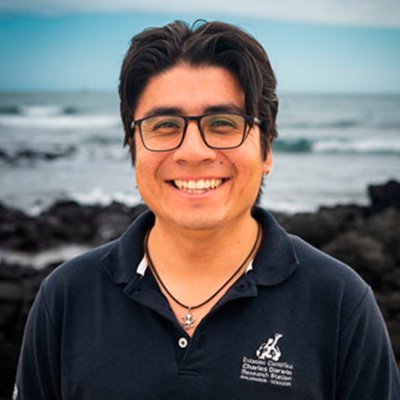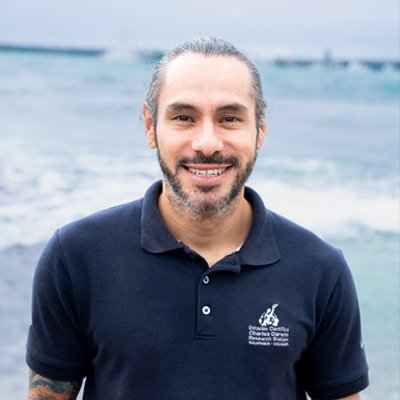The introduction of alien species is arguably the most important driver of biodiversity loss for oceanic islands. Our work seeks to evaluate the effects of alien invasive species, climate change, and other anthropogenic pressures on the biodiversity of the Galapagos Marine Reserve and the Eastern Tropical Pacific in order to better sustain coastal communities and prevent marine species extinction.
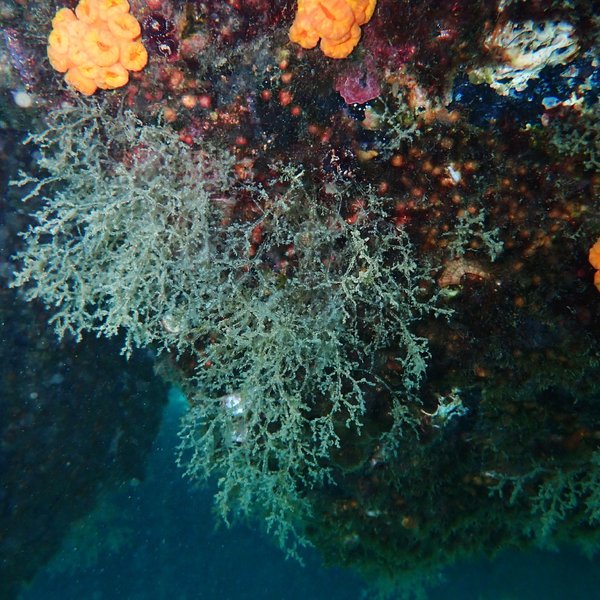
our team
Inti Keith
Principal Investigator - Marine Biodiversity Research
William Bensted-Smith
Investigator
Rosita Calderón Barrera
Researcher
Wilson Iñiguez
Junior Investigator, Marine Biologist
Franklin Terán
Research Assistant
Donors
Blue Action Fund
Paul M. Angell Family Foundation
Re:wild
Galapagos Conservation Trust
Ken Collins
Amy Blackwell
The Rohr Foundation
Oceans Finance Company
Galapagos Conservancy
Lindblad Expeditions - National Geographic Fund
Collaborators
Ken Collins
Jennifer Mallinson
James Carlton
Greg Ruiz
Mark Torchin
Kristen Larson
Linda McCann
Bernhard Riegl
Noa Shenkar
Tal Luzzatto
Terry Gosliner
Collaborating Institutions
Galapagos National Park Directorate
Galapagos Biosecurity Agency (ABG)
Naval Oceanographic Institute (INOCAR)
National Directorate of Aquatic Spaces (DIRNEA)
Smithsonian Environmental Research Centre
Smithsonian Tropical Research Institute
Scripps Institution of Oceanography
California Academy of Science
University of Southampton
Nova Southeastern University
University of Tel Aviv
University of Haifa
University of Malaga
University of Hawaii at Manoa
Conservation International
Galapagos Conservation Trust
Eastern Tropical Pacific Marine Corridor Initiative CMAR
The Challenge
The Galapagos Marine Reserve (GMR) is teeming with unique and native life, thanks to the islands' isolation that has restricted the arrival of new species. This isolation has allowed the few species that did make it to evolve without competition and predators.
Unfortunately, global marine ecosystems, including the GMR and the larger Eastern Tropical Pacific (ETP) region, are facing degradation due to a steady increase of anthropogenic pressures. Climate change, marine invasions, pollution, growing tourism and more intense fishing activities are among the documented threats, posing risks to both people's livelihoods and the overall sustainability and function of these unique ecosystems.
What We are Doing & Why It Matters
Our program aims to study underwater biodiversity, and evaluate human impacts in order to generate effective diagnostic indicators for better management and adaptation to climate variability. We do this through the following workstreams:
Subtidal Ecological Monitoring
For more than 20 years, our researchers have been recording data on three major groups of marine macrofauna: fish, macroinvertebrates, and sessile organisms. We evaluate species richness, diversity, abundance, and size, as well as the distribution, composition, and structure of marine communities.
The goal is to enhance species inventory, recognize biodiversity's importance, assess non-indigenous species arrivals, and document potential extinctions or changes in population.
Understanding such ecological variation and trends over the long term is vital to help predict ecosystem-wide ecological responses to climate change and other anthropogenic stressors, and to build resilient management plans.
Marine Invasive Species Monitoring
Invasive species are organisms that harm the native and endemic species in a new environment where they are introduced. The introduction of alien species is the second most important driver of biodiversity loss globally, after habitat destruction, and the most important driver of biodiversity loss for oceanic islands. Therefore, it represents a major threat to marine biodiversity and a priority area of research for CDF.
We deploy PVC settlement plates to passively collect benthic invertebrates and create a baseline database of species present in the GMR. Our investigation specifically examines the potential spillover of introduced species from human-made habitats (such as docks and moorings) to natural environments throughout the archipelago.
In a broader context, our goal is to comprehend the risk, both in terms of extent and impact, posed by non-native marine species already present in the GMR and those that have the potential to be introduced. This then serves as a model for evaluating invasion dynamics and refining management strategies applicable to island ecosystems and Marine Protected Areas (MPAs). Our research informs decision makers on biosecurity protocols where we emphasize prevention, early detection, and rapid response within the GMR and the ETP.
Coral Monitoring
Our researchers monitor coral health throughout the GMR looking for vulnerable reef sites that could be impacted by El Niño Southern Oscillation (ENSO) events, climate change, and other anthropogenic impacts.
Through extensive surveys and advanced technology, we assess the resilience of these ecosystems, seeking insights into recovery mechanisms. Our work involves comprehensive analyses of coral and algae cover using large-area imagery to track individual colonies over time. This data, combined with oceanographic information, contributes to a thorough understanding of ENSO impacts in Galapagos, informing effective management strategies and aiding in future El Niño predictions.
This work is crucial because coral reefs are scarce in the Galapagos, having experienced a 97% reduction during the catastrophic 1982-1983 El Niño event. With climate change expected to increase the frequency and strength of such events, our efforts become even more vital to safeguard these vulnerable ecosystems.
Oceanographic Modeling
Our researchers use climate modeling to evaluate changes in currents due to temperature rise and determine how these changes affect the transport of nutrients, larvae, and non-indigenous species. Such information is central to understanding climate change patterns and to help us predict ecosystem-wide ecological responses.
Specific Activities
- We monitor the composition of marine ecosystems to detect changes in abundance and biodiversity.
- We evaluate non-indigenous species in the ETP region.
- We seek to understand the distribution of potentially invasive species and their degree of connectivity in the ETP region.
- We study the connectivity of the ETP region under different climatic scenarios.
- We are developing an alert system for non-indigenous species incursions to strengthen marine biosecurity programs in the ETP region.
- We regularly update abundance and distribution assessments of coral reefs in the GMR.
- We identify vulnerable sites and use large-area imagery to compare sites over time.
- We identify best practices for the protection of coral reefs in the GMR.
our impact
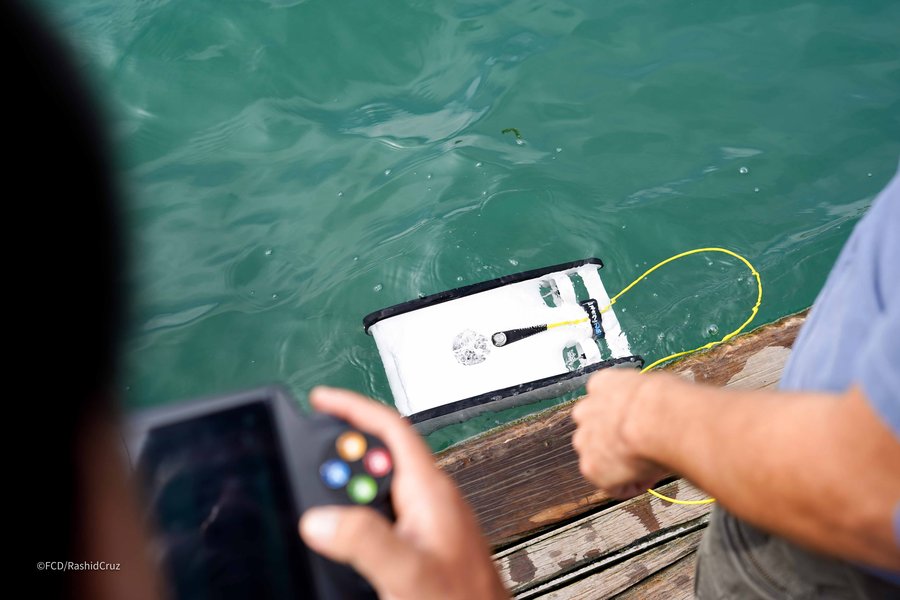
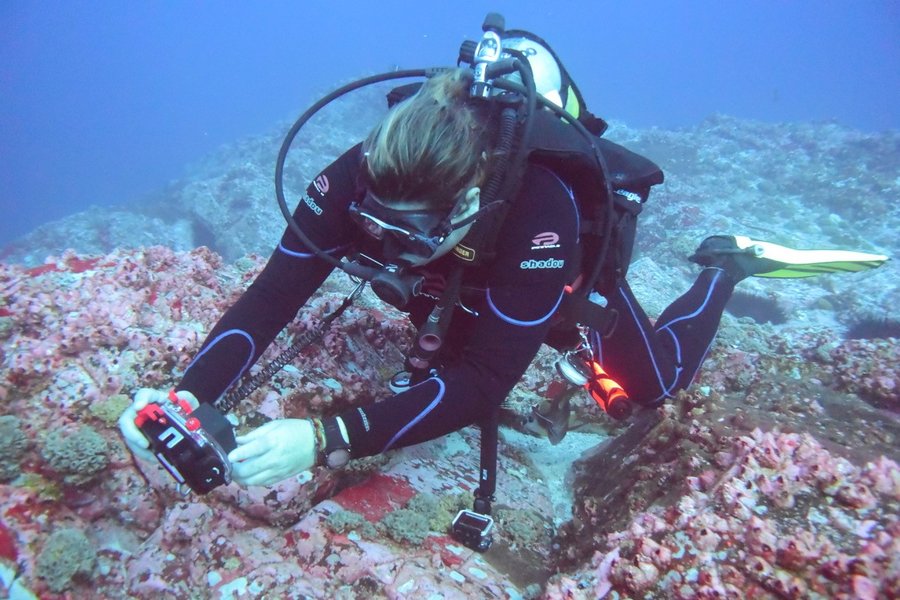
Contributing to the GMR’s management
Our subtidal ecological monitoring work has played a key role in the GMR's management since 1975. The initial subtidal surveys provided valuable input that supported the historic establishment of the GMR in 1998 and its zoning process – including the characterization of little-used sites as alternatives for recreational diving. We also collaborated in the Zoning Commission of the Participatory Management Board for the mapping and physical coastal signaling of the GMR, as well as in the seasonal oceanographic characterization using satellite information. Since 2002, we have participated in the GNP park guide courses to provide updates for more than 600 Galapagos naturalist guides and GMR dive guides.
Monitoring biodiversity changes are vital to conservation efforts
For over 20 years, the CDF has gathered fundamental data on the evolution of marine habitats at more than 60 diagnostic sites in the GMR, providing for a key insight into their response to pressures such as climate change. This constitutes the most comprehensive and longstanding dataset in the GMR and the ETP region, providing crucial information for local authorities to implement effective conservation action for this MPA.
This data, which covers fish, macroinvertebrates, and sessile organisms, offers a detailed insight into the changes in the marine environment over time, and can be accessed here: https://doi.org/10.15468/gsa458.
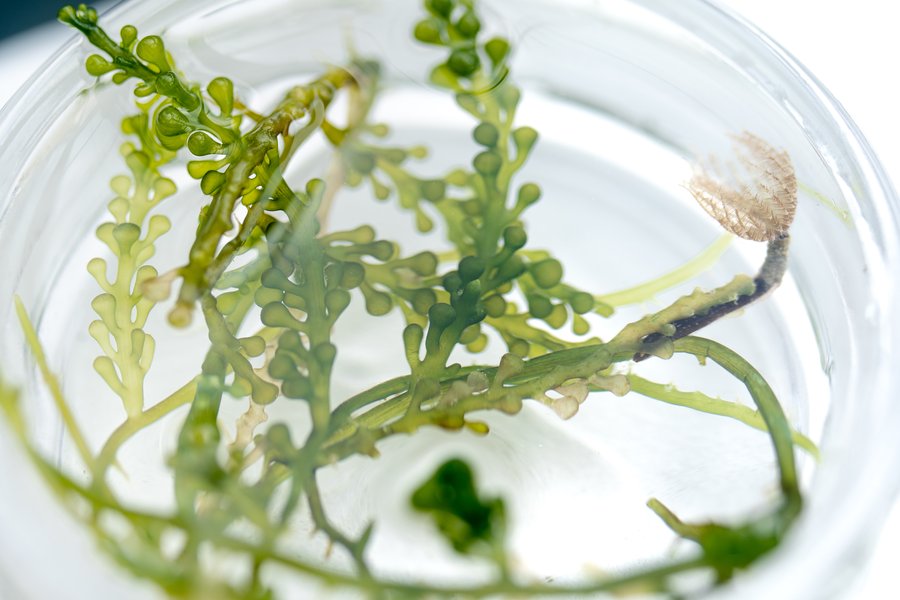
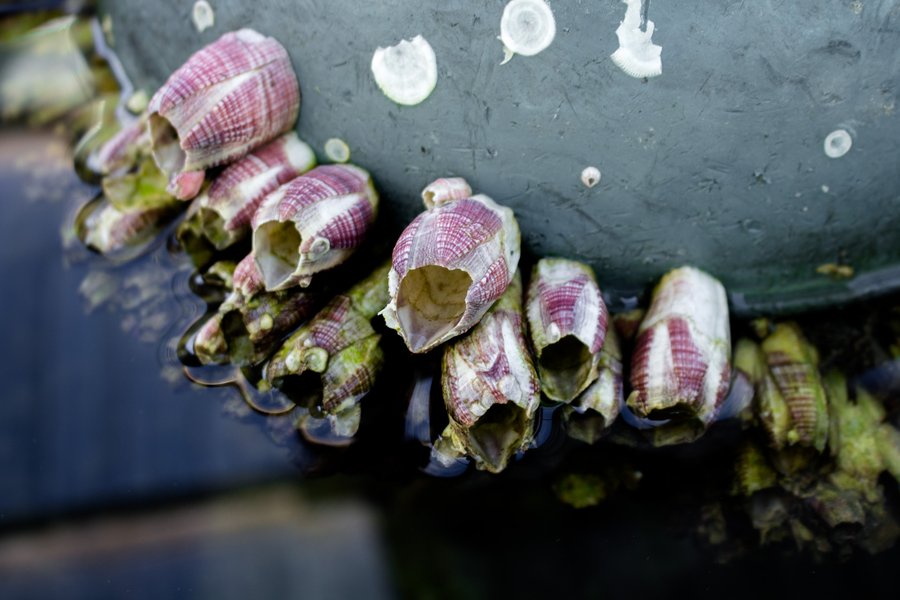
Keeping tabs on invasive species
Since 2012, our researchers have provided important information about biological invasions and the impacts of invasive species at the local, regional and international level. In Galapagos alone, we have now identified 53 alien marine species - a striking increase considering that when the project first started, only five alien marine invasive species were known to the archipelago. In 2023, we launched the first online tool – GALNEMO - to share baseline information of these introduced species with the rest of the world, in order to facilitate the exchange of information between researchers, decision-makers and other stakeholders seeking to develop effective strategies for the conservation of Galapagos’ unique marine biodiversity.
In 2017, our study expanded to include Cocos Island, Costa Rica, in collaboration with Cocos Island National Park and the Eastern Tropical Marine Corridor Initiative, CMAR. This collaboration is crucial due to the inherent connectivity among marine reserves in the ETP.
Understanding how plastic pollution brings invasive species in the ETP
Since 2015, we've collected marine debris, mainly plastic, across Galapagos to understand its role in spreading invasive species. We established a drop-off point at the Charles Darwin Research Station on Santa Cruz Island, collaborating with local clean-up initiatives, and dive and naturalist guide associations. Our findings revealed that approximately 25% of beach plastic in Galapagos hosts at least one animal or plant.
We also study ocean currents and use ocean models to find out more about how plastic arrives at the GMR, in order to predict dispersal of this plastic within the GMR and the ETP. We are part of the regional initiative Pacific Plastics Science to Solutions.
Why You Should Support Us
The United Nations has designated 2021-2030 as the Decade of Ocean Science for Sustainable Development.
To advance this initiative, we need a comprehensive approach to gather data and knowledge for better ocean management and the growth of a sustainable ocean economy.
By supporting our marine biodiversity research program, you are helping us assess the impacts of climate change and human activities on marine biodiversity in the GMR and the ETP – one of the most biodiverse places in the world. This, in turn, will aid local decision-making, enhance the scientific agenda, and improve conservation practices for marine biodiversity across the region.
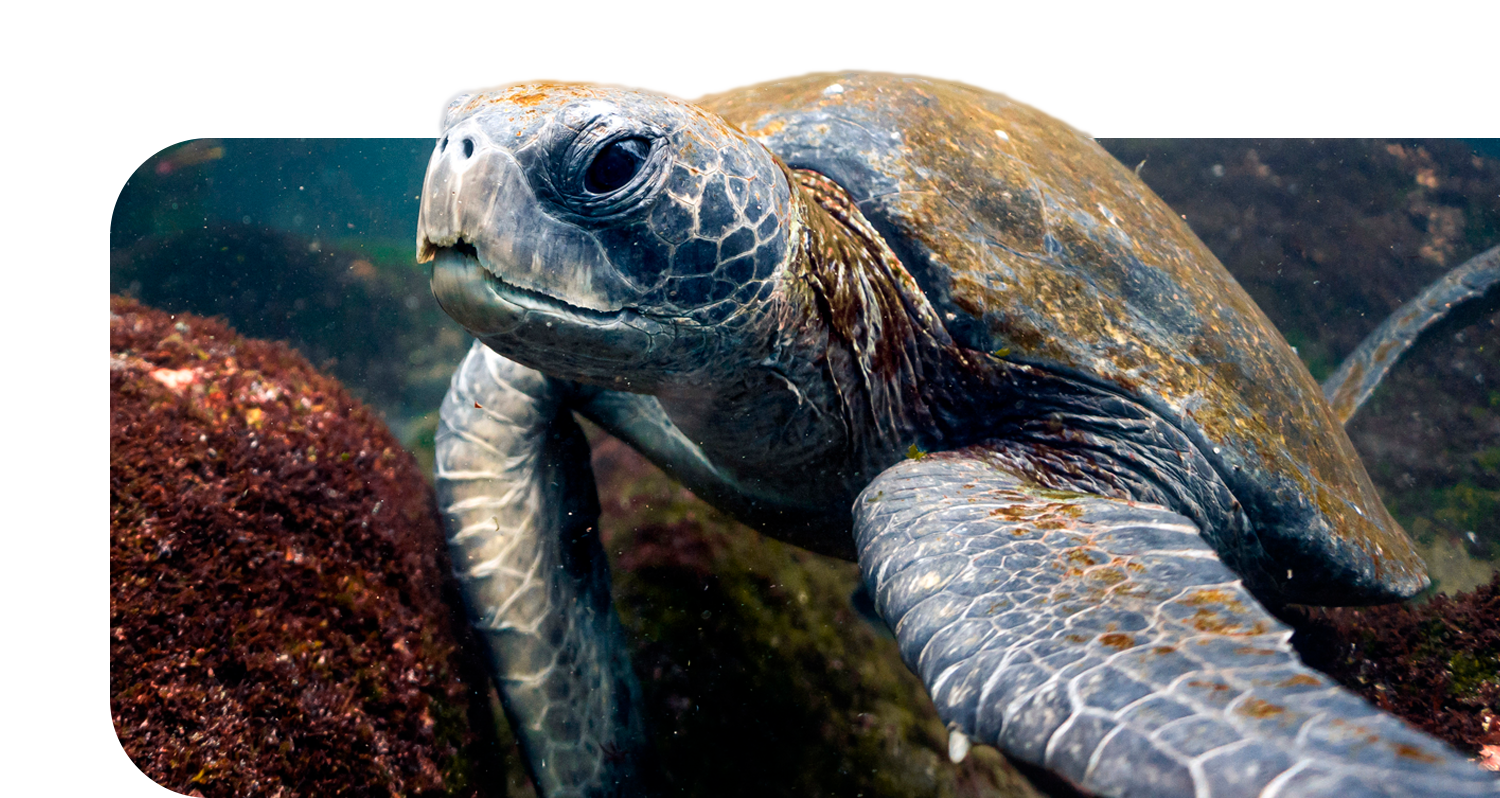
Bibliography
Bensted-Smith, W., Keith, I., Grove, J., & Banks, S. (2023). New record of Azurina intercrusma (Evermann & Radcliffe, 1917)(Ovalentaria incertae sedis, Pomacentridae) and confirmation of Scuticaria tigrina (Lesson, 1828)(Anguilliformes, Muraenidae) in the Galápagos Islands. Check List, 19(5), 611-620.
Buglass, S., Kawai, H., Hanyuda, T., Harvey, E., Donner, S., De la Rosa, J., Keith, I., Bermúdez, J. R. & Altamirano, M. (2022). Novel mesophotic kelp forests in the Galápagos archipelago. Marine Biology, 169(12), 156.

Protect Galapagos, Impact the World
The impact you make on this small ecosystem of enormous biodiversity is part of a larger footprint you are leaving for the world's future. Join us on our mission to safeguard one of our planet’s most important natural treasures through science and conservation action by making a donation today. Thank you for making an impact with us.





